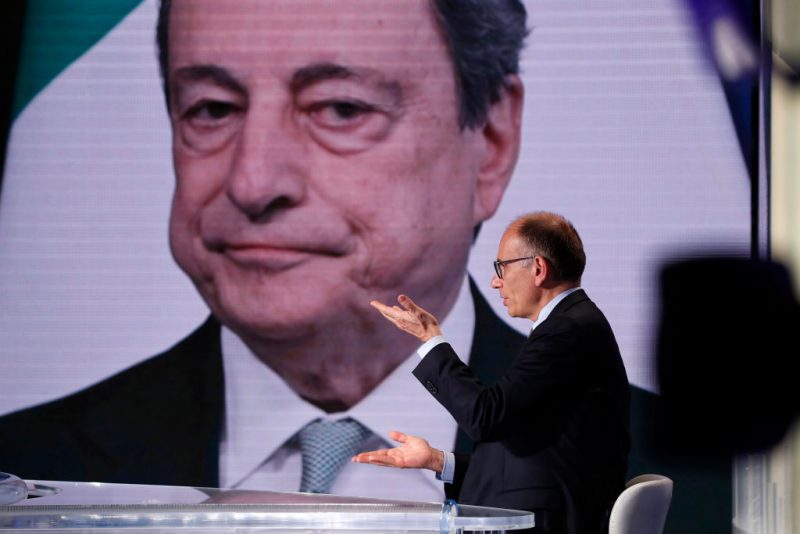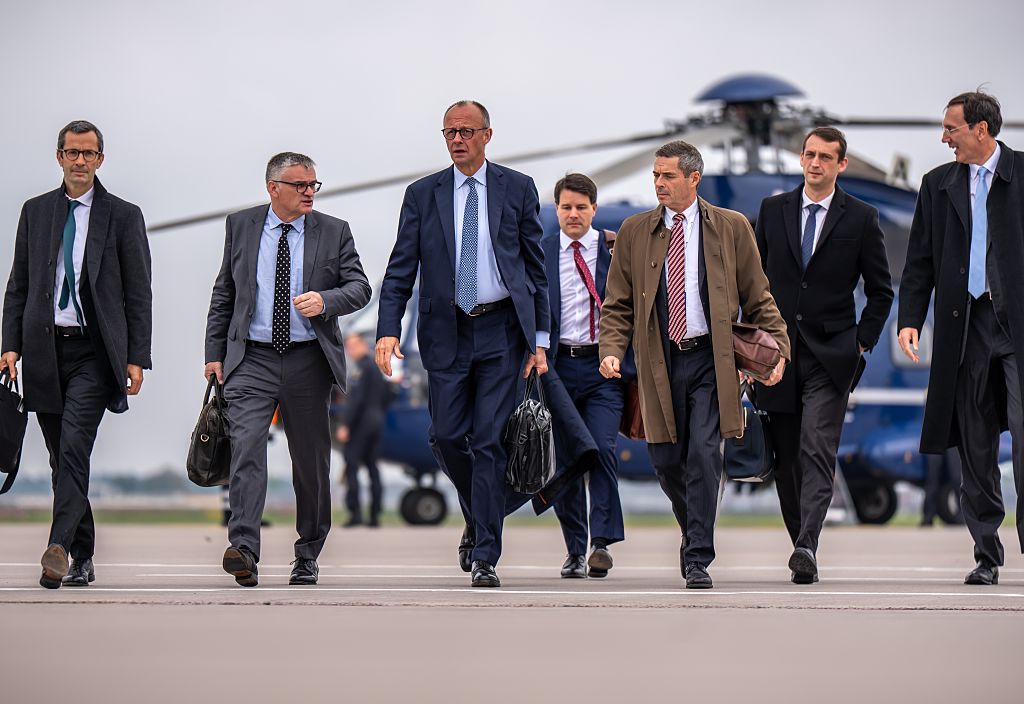When European leaders met in Copenhagen for their informal summit yesterday, the agenda was dominated by Ukraine, defence and the plan to create a European drone wall. Given Russia’s latest provocations and America’s ongoing retreat from the continent, those priorities were understandable. But the war in the East is not the only threat to Europe’s security and even sovereignty. Some of the biggest risks are economic. They deserve more attention.
The global economic landscape has been transformed in ways that until very recently were scarcely imaginable. When Mario Draghi published his report just a year ago, the focus was on competitiveness – how to revive a European economy lagging behind America and China. Today the stakes are much higher. The old global rules-based order is giving way to a new era of state-based capitalism and weaponised trade. China and America are exploiting their control of chokepoints to extract benefits from friend and foe alike. Europe urgently needs a response.
Europe has already tasted what this new world entails. In July, Ursula von der Leyen felt compelled to agree to a deeply one-sided trade deal with Donald Trump as the price of maintaining the president’s commitment to European security. Since then, Trump has threatened further tariffs if Europe doesn’t change its digital services rules. Meanwhile, Beijing brought some European factories to a standstill earlier this year when it halted supplies of rare earth magnets. For a continent with few resources whose economic model is built around accessing its needs on open markets, it has been brutal.
What’s more, America isn’t just weaponising trade but capital too. Countries seeking improved tariff deals from the Trump administration have had to make substantial capital commitments. The White House claims to have secured $8 trillion in promised new investment since Trump’s return.
Japan has committed to establish a $550 billion fund to invest in America, which Trump says will be allocated at his direction. South Korea will establish a $350 billion fund, including $150 billion for shipbuilding to “Make American Shipbuilding Great Again”. Gulf states have promised over $3 trillion. Switzerland is offering to invest in the US gold-refining industry as part of its efforts to secure a lower tariff deal. The EU itself has promised at least $600 billion of corporate investment by 2029.
Dismissing these as empty promises misses the point. Recent Trump announcements suggest the administration is serious about getting foreigners to pay for America’s reindustrialisation. New 100% tariffs on pharmaceutical imports, for example, will only be waived for companies already manufacturing in the US or with investments underway. Twelve ongoing national security investigations into everything from robotics to medical equipment to wind turbines and semiconductors will likely trigger a fresh round of tariffs designed to encourage production relocation to America. According to Treasury Secretary Scott Bessent: “In essence, other countries are providing us with a sovereign wealth fund.”
Both America and China are now pursuing self-declared policies of self-sufficiency. As it seeks to rebuild its industrial capacity, America is increasingly embracing its own version of state capitalism. In recent months, the federal government has taken equity stakes in chipmaker Intel and MP Materials (America’s only rare earths miner), plus a golden share in US Steel, and hit Nvidia and AMD with an export tax on chip sales to China.
At the same time, China is establishing new chokepoints, not least in its dominance of clean technologies. To the extent that this pursuit of autarky diverts investment that might have gone to Europe, or creates excess capacity that damages European firms, it threatens to leave the continent poorer and weaker.

Enrico Letta speaks at a panel, with former Italian prime minister Mario Draghi on screen. (Photo by Massimo Di Vita/Archivio Massimo Di Vita/Mondadori Portfolio via Getty Images)
Faced with these threats to its economic security and sovereignty, how should Europe respond? The obvious priority must be to deepen its domestic market so Europe can be less dependent on exports for growth. This means delivering on the recommendations of the Draghi and Letta reports to cut red tape and reduce internal barriers to trade – on which progress has so far been painfully slow. A more dynamic economy would also attract more investment, including luring back some of the €300 billion of savings Europeans invest in America each year.
The second priority is to expand international trade to diversify supply chains, boost growth to offset some Trump tariff damage, and build coalitions among like-minded countries to preserve what remains of the rules-based trading system. Here the EU has done well, striking new free trade deals with Mercosur, Mexico and Indonesia, with negotiations ongoing with India, Malaysia and the United Arab Emirates.
The third priority is to invest strategically to reduce dependencies, establish European sovereignty in critical technologies, and create its own chokepoints. Yet when it comes to state aid, as Draghi noted in a speech last month marking his report’s anniversary: “So far, Europe’s response has fallen into two traps: uncoordinated national efforts, or blind faith that market forces will build new sectors. The first can never deliver scale. The second is impossible when others distort markets and tilt the playing field.”
What Europe needs is the economic equivalent of a European drone wall to preserve its security and sovereignty. But that would require member states to hand new powers and funding to Brussels. Building and maintaining European industrial capacities would come with costs and carry risks.
The alternative is to leave the defence of economic security to national governments, including via looser state aid rules. But that is a recipe for subsidy races and deeper fragmentation that can only leave the continent more vulnerable.
Simon Nixon is a columnist at Euractiv and publisher of the Wealth of Nations newsletter on Substack. He is a leading commentator on European political economy and geoeconomics and was Chief European Commentator at The Wall Street Journal from 2013 to 2018.
